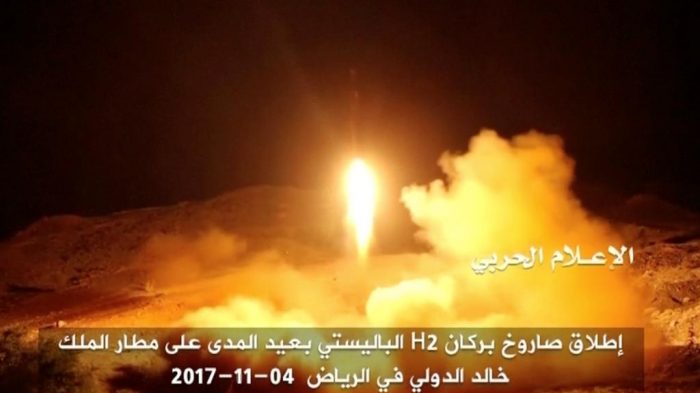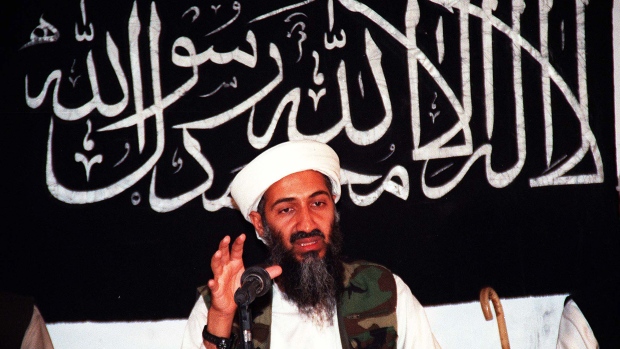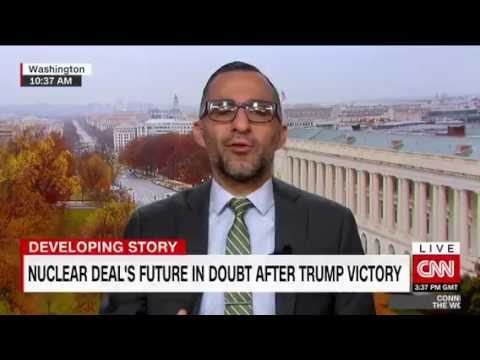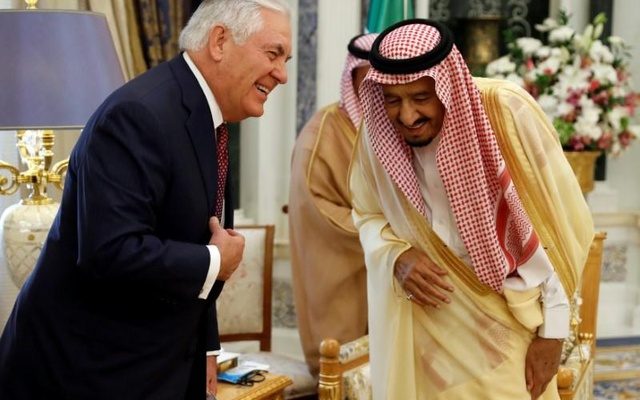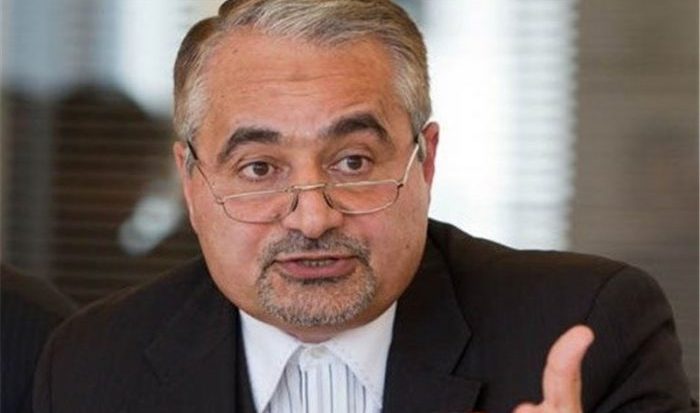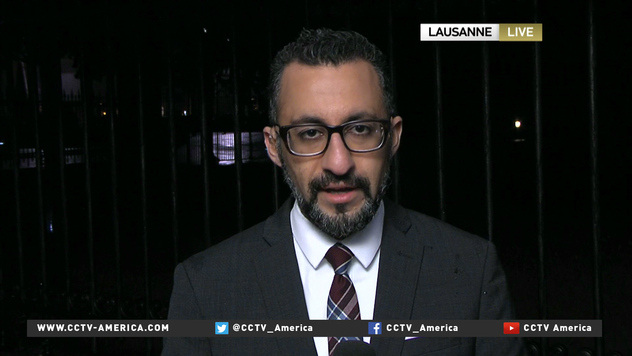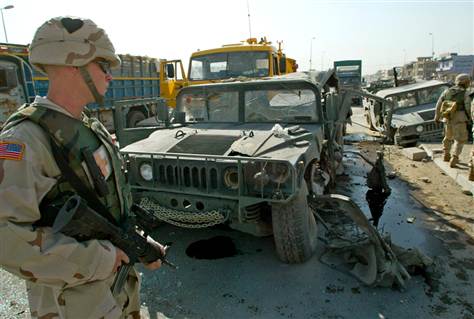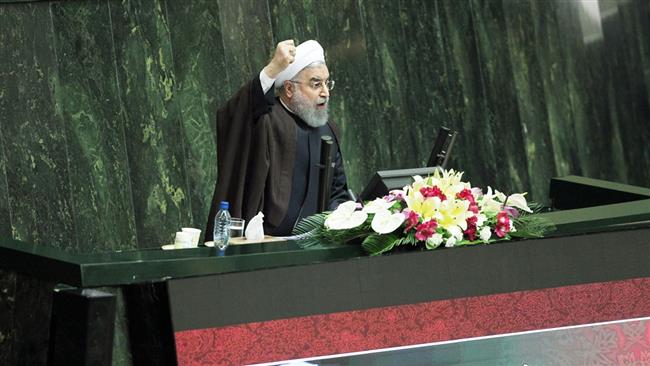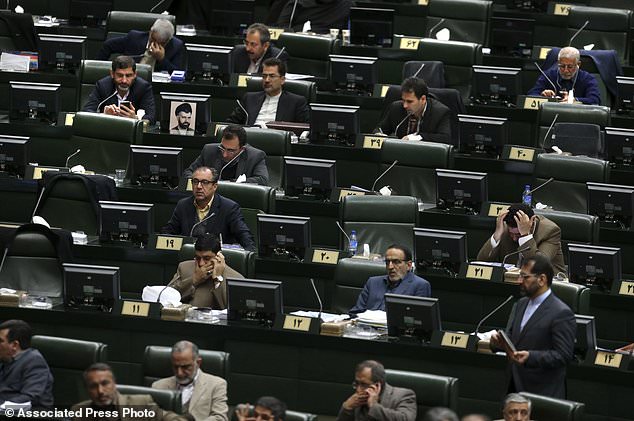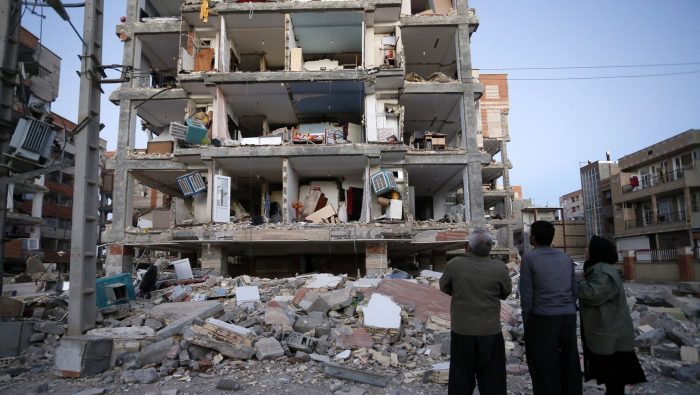
In this photo provided by the Iranian Students News Agency, ISNA, people look at destroyed buildings after an earthquake at the city of Sarpol-e-Zahab in western Iran, Monday, Nov. 13, 2017. A powerful earthquake shook the Iran-Iraq border late Sunday, killing more than one hundred people and injuring some 800 in the mountainous region of Iran alone, state media there said. (Pouria Pakizeh/ISNA via AP)
This past Sunday night a massive 7.3 Richter magnitude earthquake struck the mountainous border region between Iran and Iraq, shaking many provinces and killing over 530 people and leaving tens of thousands homeless as winter weather conditions set in.
In terms of power and sheer destructiveness, this earthquake surpassed the recent temblor that hit Mexico City last September. For most people around the world, televised scenes of devastation, heartbreak and loss caused by these natural disasters are common fare on news programs, as well as appeals for help to the international community.
But in Iran, under the strict rule of the mullahs, such normally ordinary actions are often difficult at best and impossible at worst as the Iranian regime seeks to project an air of competent government response, while struggling with massive incompetence that costs lives daily.
It is the sad testimonial of ineptness that often runs rampant within the theocratic state that values global reputation more than actual results on the ground.
By accident of geography and tectonic plates, Iran sits in one of the most active earthquake zones on the planet with a long history of devastating earthquakes. Some of the more notorious earthquakes and their subsequent death tolls include:
- 11, 2012: Iran’s East Azerbaijan province, magnitude 6.4; Over 300 killed
- 26, 2003: Southeastern Iran, Bam, magnitude 6.5; Over 26,000 killed
- 28, 1997: Northeast Iran, Ardabil, magnitude 6.1; Over 1,100 killed
- May 10, 1997: Eastern Iran, Birjand-Qaen, magnitude 7.3; Over 1,560 killed
- June 21, 1990: Northwest Iran, Rudbar, magnitude 7.4; 50,000 killed
What is remarkable given this history of seismic disaster is how utterly incompetent the regime has been in pushing tougher building standards and inspections to protect its citizens from these kinds of devastating losses.
In similar earthquake-prone areas such as Japan and California, strict building codes have historically minimized loss of life, property destruction and disruption to infrastructure and public services.
Even massive quakes measuring over 6 on the Richter scale often leave local residents yawning with minimal disruptions. Why then is Iran so different?
Much of the fault lies at the footsteps of the mullahs who have built a government based on intimidation and fear and riven deep with corruption, nepotism and lack of transparency. Agencies that track transparency and government corruption have consistently ranked Iran at or near the bottom.
Most ordinary Iranians are all-too aware of the corruption that infests all levels of Iranian society where the families of powerful mullahs or members of the Revolutionary Guard Corps have access to capital and favorable influence through the myriad number of shell companies they control that cover most of the Iranian economy.
What this often means is the pursuit of profit to skim and line their family bank accounts often takes precedence over the need to spend more on construction materials to build earthquake resistant and fire-safe buildings.
The history of shoddy construction and lax accountability is well documented in Iran with a high-rise tower recently catching on fire and collapsing last January killing scores of firefighters inside. The building was owned by the Mostazafan Foundation, an extension of the IRGC, which apologized for its role in the building’s collapse, but no officer or member of the foundation was ever arrested or put on trial.
A report issued the following April stated that regime ministries had failed to enforce a reported 22 violations of national building regulations leading up to the fire and collapse.
With this weekend’s earthquake, the regime has again demonstrated how it values its own grip on power rather than show any signs of weakness as it declared it would not accept aid offered from other nations even though an estimated 30,000 homes were damaged or destroyed.
“We are hungry. We are cold. We are homeless. We are alone in this world,” a weeping Maryam Ahang, who lost 10 members of her family in the hardest hit town of Sarpol-e Zahab, told Reuters by telephone.
“My home is now a pile of mud and broken tiles. I slept in the park last night. It is cold and I am scared.”
Her story is all-too common in the Iranian regime and demonstrates the undercurrents of deep anger, frustration and desperation that has been seeping into the Iranian population for years now; hungry for regime change and more freedom and accountability.
The torrent of angry and desperate pleas for help have flooded social media as journalists reporting from the disaster area have shown interviews of homeless residents and local officials blasting the relief effort and complaining of little media attention from the tightly controlled state media.
Even the hardline Fars news agency posted a video of angry residents in Sarpol-e Zahab, complaining of what they described as a lack of attention and news coverage of their plight. “People need water and food. Help us,” a man says in the video from the town, which is located in a largely Kurdish-populated area.
“There’s not even a good team covering the news about us, and there’s no one removing the debris, people here are not part of Iran? Are we not part of this nation?” another man asks.
“A gentleman in a suit comes here and tells the media that all has been resolved,” alleged another.
Interestingly enough, the Iran lobby led by the National Iranian American Council took the opportunity to use the natural disaster to take a swipe at the economic sanctions levied against Iran for its missile program and support for terrorism by blaming the lack of aid flowing to the region on sanctions.
The NIAC conveniently ignores the regime’s refusal to let in any foreign assistance and its own ineptitude in handling the response.
In an interview with Al Jazeera, Reza Marashi of NIAC, said he expects Iranians to rally behind the country’s leadership amid the disaster.
“I think you are going to see a more robust government response in the coming days,” Marashi told Al Jazeera.
“If you don’t see that response from the government, then you will start to see outrage from the people, which is the last thing the Iranian government is going to want.”
Clearly Marashi got it wrong.
Laura Carnahan
